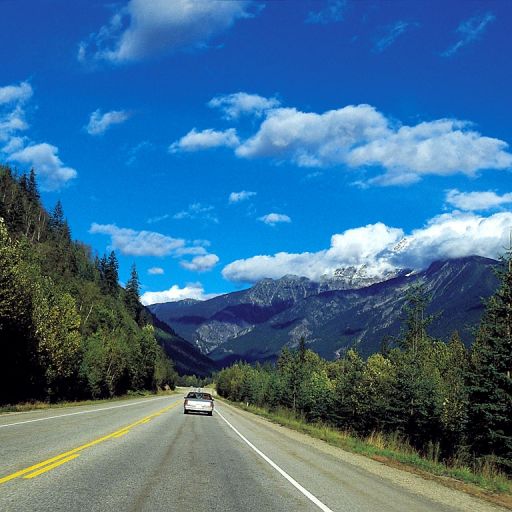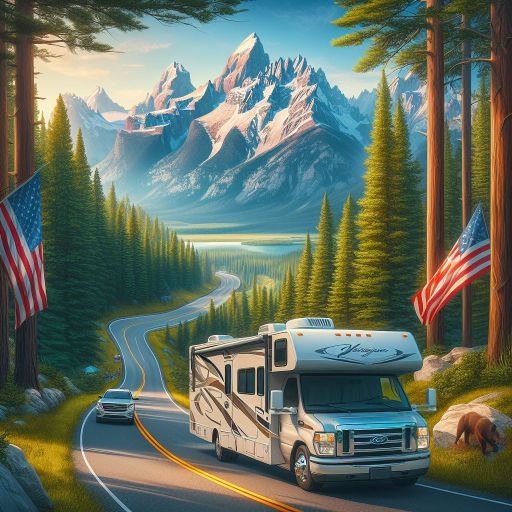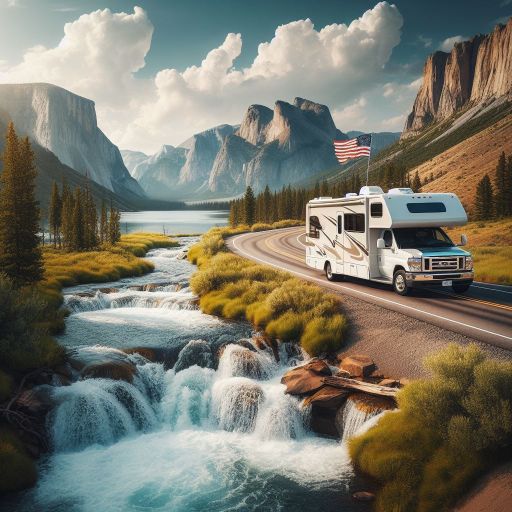What to do When Your Auto Insurance Claim is Denied?
About Balance Transfer Basics!
What do you Know About Credit Scores!
Unveiling the Truth: Debunking Home Insurance Myths.
Weighing the Pros and Cons: Using a Personal Loan to Tackle Credit Card Debt.
What You Need to Know About Secured Credit Card Deposits!
Going on an RV road trip is a unique and adventurous way to explore the open road. Whether you are an experienced tourist or a first-time RVer, there’s nothing like being on the move with all the home comforts.
From the convenience of your modern amenities to the freedom of hitting the open road, these two blend perfectly in RV road trips.
Planning Your Route: Tips and Tools
It is important to plan your route properly so that your RV journey is successful and enjoyable. Begin by picking out where you intend to go as well as the key attractions you wish to see.
Use resources such as recreational vehicle-specific GPS systems, route planning apps, and websites with information regarding roads suitable for recreational vehicles and campgrounds too.
Also, make sure you have planned stops at regular intervals throughout your journey, which will allow you to take breaks or explore interesting places along the way.
Make reservations well in advance, especially during peak travel seasons at popular campgrounds, or have other options available in case something goes wrong and your initial plan ends up falling apart.
Top Scenic Highways for Your RV Adventure
America has some of the best roads that offer superb scenery for RV vacations. The Pacific Coast Highway is characterized by stunning coastal views and delightful seaside villages.
The Appalachians are crossed by the Blue Ridge Parkway, which allows one to have a breath-taking view and many trails to hike on. Route 66, known as “Main Street of America,” gives you a chance to experience classic America as you journey through history.
On its way, the Great River Road criss-crosses charming river towns and pretty landscapes. These roads provide amazing experiences and beautiful scenarios.

Essential RV Packing List for the Road
Preparing supplies for an RV trip involves packing efficiently in order to have all necessary items with you on your journey. Such items include the following:
●Safety Gear: first aid kit, roadside emergency kit, fire extinguisher.
●Kitchen Supplies: pots, pans, utensils, plates, cups, food storage containers, and non-perishable foodstuffs.
●Personal Items: clothing for different weather conditions, toiletries, medicines, and personal electronics.
●RV Maintenance: Spare tires; tools; extra oil; coolant.
●Camping Gear: outdoor chairs, tables; awning; grill.
●Entertainment: For your destinations, books games, maps, and guides
Varied Landscapes in America
The diverse landscapes of America are a great challenge and reward for RV drivers. A mountainous region will have steep climbs and winding roads, so be prepared.
If you find yourself in deserts, just remember to take additional water with yourself due to the high temperatures always experienced here. Coastal drives provide stunning views. However, they tend to be narrow with lots of traffic that requires extra care while driving.
Forested places typically have low branches and tight turns. Before starting your journey, always check road conditions and weather forecasts.
Safety and Etiquette on the Open Road
A successful RV journey must prioritize safety measures as well as etiquette. It is advisable to follow all speed limits and ensure that you do not forget about the size and weight of your vehicle, especially when driving through narrow or curvy roads.
Pull into stops every time there are faster cars behind you. You cannot ignore other drivers and should help them out if they have car problems.
Maintain a reasonable distance between vehicles, and keep an eye on your blind spots. At camping sites, obey quiet hours and maintain cleanliness within your compound while adhering to all set-down laws, respectively.
It’s therefore important for you to adopt good road safety practices so as to guarantee yourself a nice ride alongside others on the road.

Seasonal Considerations: When to Travel
A lot depends on the season you choose to start your RV adventure. Each of these seasons comes with its own advantages and obstacles.
Spring: This is a time when the weather is nice and there are lots of flowers in bloom. National parks are not as crowded as summers, so one can get more relaxed experiences here.
Besides, be careful of late snowstorms that may hit mountainous areas and wet conditions in some regions.
Summer: Summer provides warm temperatures and long days well suited for outdoor activities. Popular areas get busy; therefore, ensure you book campgrounds early enough.
Remember, desert regions record higher temperatures, so make sure your motor vehicle’s cooling systems work properly.
Fall: The temperature drops with beautiful fall foliage, making this period ideal for road trips. After the busy summer months, crowds recede, thus giving travelers a chance to get into the holiday spirit slowly.
Check ahead for availability and conditions before getting there, since some campsites start closing at this time of the year and uncertainties about the weather still exist.
Winter: If you enjoy landscapes covered in snow plus winter sports, then a winter road trip might seem magical to you. Ensure that your recreational vehicle (RV) is ready for cold temperatures by winterizing it just before the journey begins.
This will allow you to avoid any inconveniences when driving along icy roads or discovering them closed completely due to a heavy snowfall warning or other reasons.

Sustainable RV Traveling: No Trail Left Behind
Traveling sustainably with an RV can be understood as limiting your ecological footprints and retaining the beauty of nature for generations to come. Let’s take a look at some of the suggestions for leaving no trace whatsoever.
Decreased waste: Carry around reusable containers, namely water bottles, utensils, and grocery bags. Dispose of all refuse and recyclable materials in the assigned places.
Water Conservation: Minimize shower time. Fix any leaks and install water-saving devices. Be mindful when using water in areas that do not have enough supplies.
Stay on Designated Paths: Preserve the foliage by sticking to marked trails and campsites, thus preventing soil erosion. Do not venture off-road because it negatively affects fragile ecosystems.
Conclusion
Exploring America’s scenic highways and diverse landscapes through an RV road trip is quite an unconventional and exciting way to indulge one’s adventurous side.
RV travel is like no other, as it combines the best of both worlds, i.e., a modern-day hotel room with its amenities on wheels and the freedom of driving along whatever road you’d prefer.